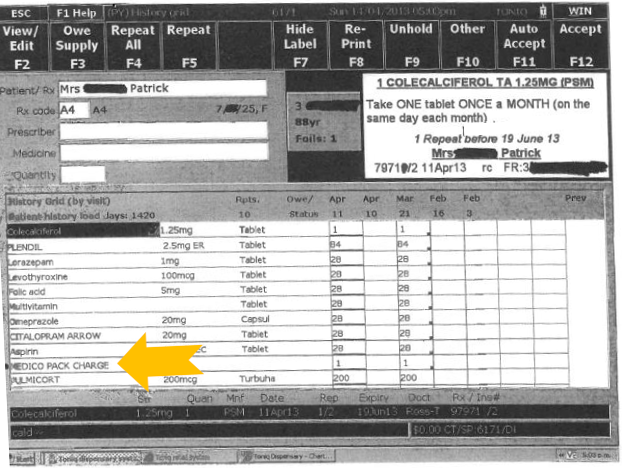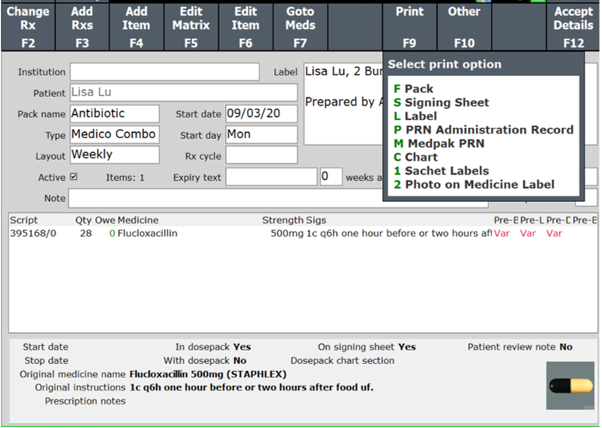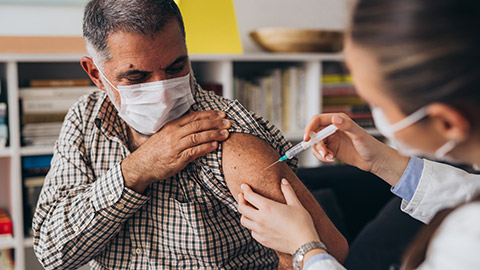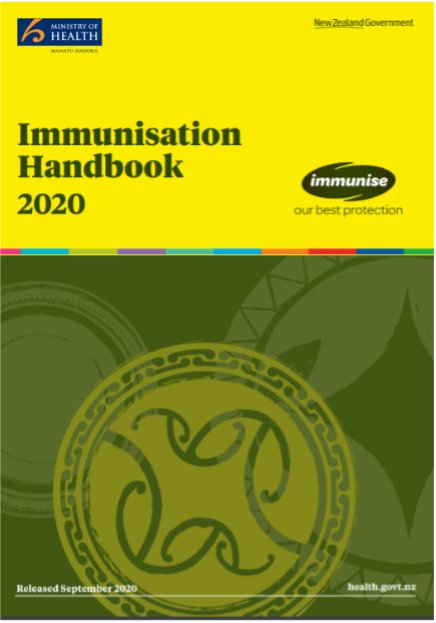Kia ora, Talofa, Kamusta, Malo’etau lava, Ki orana. Hello and welcome to this session of Professional Practice, where we continue to build on our foundational knowledge of communication techniques.
Communication techniques
In our previous session, we looked at:
- active listening
- summarising and paraphrasing
- clarifying information from others
- asking and answering questions.
In this session we will focus on:
- responding respectfully and in a non-judgemental manner
- responding in a culturally appropriate manner.
We will continue to use the Document Tool to capture your reflections, existing knowledge, and new insights into real-world scenarios. You are strongly encouraged to download and save the completed activities to a dedicated folder on your device.
Responding respectfully and non-judgementally
In the following activity, reflect on what you already know about this communication technique. If you’re unsure about how to answer these questions, there will be the opportunity to come back to this activity later in the session to add new information. You can also do your own research and talk to your tutor and pharmacy colleagues.
Let’s look at what this might look like in practice. Here are two examples of the same scenario. Example 1 depicts the pharmacy technician not responding in a respectful and non-judgemental manner. Example 2 shows the opposite, with the pharmacy technician responding respectfully and non-judgementally.
The scenario
Jessica is a pharmacy technician working in a pharmacy on a steady morning – there are a few customers waiting. Jessica is assisting a customer named Sarah, who has some concerns about her medication.
Example 1

Sarah: “I'm not sure about these new pills. Can you tell me about the potential side effects?”
Jessica: (Sighing and looking at the other customers waiting to be served.) “It's right there in the leaflet that comes with your medication. Just read that.”
Sarah: (Blushing and looking embarrassed.) “I did read it, but I wanted to hear it from you too.”
Jessica: (Sighs impatiently.) “Well, side-effects can vary. Just take it as prescribed.”
Sarah: (Feeling uncomfortable.) “Okay, but what if I experience something unusual?”
Jessica: (Dismissively.) “If it's that concerning, you should ask your doctor. They're the ones who prescribed it.”
Sarah: (Nervous.) “I was just hoping for some guidance from you.”
Jessica: (Dismissive tone.) “Well, it’s pretty simple really. If you experience anything 'unusual,' then contact your doctor.”
Sarah: (Frowning.) "Oh, um, okay".
Example 2

Sarah: “I'm not sure about these new pills. Can you tell me about the potential side effects?”
Jessica: (Smiling.) “Sure, Sarah. I understand your concerns. The medication you've been prescribed can have potential side effects, including [mentioning common side effects]. However, it's important to note that not everyone experiences them, and they might vary in intensity.”
Sarah: (Feeling a little embarrassed.) “Thank you for explaining that. I'm just a bit worried about how it might affect me.”
Jessica: (Maintaining attention on Sarah and smiling.) “I completely understand. It's natural to have concerns about new medications. If you notice any unusual symptoms or side effects that worry you, please don't hesitate to contact your prescribing doctor. They can guide you on the best course of action.”
Sarah: “Okay, that's reassuring. I appreciate your patience.”
Jessica: “You’re welcome. If you have any more questions or concerns, feel free to ask. It's important to ensure you're comfortable with your medication.”
Sarah: (Smiling.) “Great, thank you.”
Compare and contrast the two examples you have just read and consider the following:
- What actions and behaviours did the pharmacy technician display that demonstrated respect and non-judgement?
- What specific words or phrases did the pharmacy technician use that showed respect and non-judgement?
- How do you think Sarah felt after the interaction in Example 1 and in Example 2?
- What do you think the other customers who observed the interaction in Example 1 would think and feel?
- What do you think the other customers who observed the interaction in Example 2 would think and feel?
Add your responses to these questions to the previous document you saved on responding respectfully and in a non-judgemental manner.
Responding respectfully and in a non-judgemental manner is a crucial communication technique for pharmacy technicians when providing information on health-related matters to patients.
By responding to patients in this way, you are:
- acknowledging and valuing the patient's perspectives, concerns, and experiences, which is a key element in professional behaviour.
- demonstrating respect and non-judgemental behaviour that builds trust and confidence in the pharmacy-patient relationship.
- showing appropriate body language, facial expressions, and gestures to convey respect, attentiveness, and understanding.
- supporting patients to follow medical advice and treatment plans, leading to improved medicine adherence and health outcomes.
- establishing positive interactions, fostering trust, and contributing to a patient-centric approach.
Responding in a culturally appropriate manner
A huge part of providing patient-centric care is viewing each patient as having their own unique needs. In this activity, you will reflect on the communication technique of responding in a culturally appropriate manner.
Responding and communicating in a culturally appropriate manner is part of cultural competence. Previously, we have looked at what cultural competence means in the pharmacy environment. To review your learning, re-read the Pharmacy Council brochure: Statement on cultural competence. Often, when we revisit our past learning, we gain new insights and develop our ideas of how our learning can be applied to the ‘real world’ of pharmacy practice.
To extend your insights on cultural competence, read this document from the Pharmacy Council: Towards culturally safe practice. The document is aimed at pharmacists who are applying for their annual recertification of their practising certificate but contains important points for all pharmacy staff about culturally safe and appropriate practice. To support your reading, we have highlighted some of these important points for you.
Once you have completed your reading, answer the following reflective questions:
Ka pai. By reflecting on your own cultural identity, you can understand and acknowledge how your own values, beliefs and biases might influence how you treat patients. This is an important step in working towards embedding culturally safe care into your everyday work.
Let’s look at an example of what this might look like in the real world in our next forum activity.
Forum activity
scenario - Culturally Appropriate Communication
Read the scenario and then answer the following questions.
A pharmacy technician is interacting with a patient who is from a different culture to their own. The pharmacy technician knows the patient as he is a regular customer at the pharmacy. They have built a trusting relationship and address each other by their first names.
Malia: "Talofa lava, Sione! How can I help you today?”
Sione: "Talofa, Malia! This is my sister, Lina, and my son, Mateo. They are helping me out a bit today.”
Malia: "Talofa, Lina, Talofa Mateo! Nice to meet you.”
Sione: “I wanted to see you, Malia, as I’m a bit unsure about this new medication my doctor gave me."
Malia: “Sure thing, Sione, let's go over the medication together. So, taking this medication is important for your health. Do you know how to take it?"
Sione: "Not really, that’s the thing - I want to make sure I'm doing it right."
Malia: "That’s all good, I'm here to explain. So, this medicine is to be taken with food; it’s best to take it in the morning. Are you using any supplements, traditional Samoan remedies, or herbal preparations at the moment?"
Lina: "Yes, sometimes he also uses a traditional herbal remedy our mother made."
Malia: "Thank you for sharing that, Lina. It's important to consider all approaches to care and to know everything you are taking. I can check that your herbal remedy and your medicine are safe to take together. We want to be sure there are no interactions between the two. Do you have any other concerns you'd like to discuss today?"
Mateo: "I do. I'm worried about how this new medicine might affect his diabetes."
Malia: "That's a valid concern, Mateo. We can definitely discuss that as well. Is there anything else you'd like to ask or share?"
Sione: "No, I think that covers all our questions for now."
Malia: “Great, well, if you and your family have more questions later, don't hesitate to ask. Let’s go over here where there is a bit more room for us all to chat about your medicine."
- Identify the parts of this interaction that show that the pharmacy technician was communicating and responding in a culturally appropriate manner.
- Consider if you were the pharmacy technician in this scenario. Would you have done anything differently? If so, what and why?
- Post your answers to the forum: Culturally Appropriate Communication.
- Read your peers' comments. As we all have our own cultures, beliefs and experiences, by reading their perspectives, you may gain new insights or ideas for responding in a culturally appropriate manner.
Responding in a culturally appropriate manner is another communication skill that is a part of practising professionally and ethically. As noted, communicating in a culturally appropriate manner and being culturally competent is a journey, learned and developed over time. By responding in this manner when providing health-related information to patients, you are:
- demonstrating cultural sensitivity that promotes trust, respect, and a positive pharmacy-patient relationship.
- adapting your communication style and approach to meet the cultural needs and expectations of the patient you are interacting with to ensure their health and well-being needs are met.
- considering cultural differences to minimise the risk of misunderstandings that may arise due to varying cultural interpretations.
- avoiding making assumptions based on stereotypes.
- demonstrating that you are open to learning about different cultures.
- taking note of non-verbal cues, personal space preferences, and appropriate touch based on the patient's culture.
- ensuring that health-related information is accessible and meaningful to patients from diverse cultural backgrounds, contributing to improved patient care.
- using an equitable approach to providing pharmacy technician services.
- contributing to a more inclusive healthcare environment.
Self-directed learning activity
Over the last two sessions, we have explored the following communication techniques in relation to providing patients with information related to health:
- active listening
- summarising and paraphrasing
- clarifying information from others
- asking and answering questions
- responding respectfully and in a non-judgemental manner
- responding in a culturally appropriate manner.
- Create a new journal post titled 'Communication Technique #1'.
- Choose ONE of these communication techniques and describe a situation where you have used it in your workplace when interacting with patients.
- Briefly explain:
- The situation: For example, "A patient came into the pharmacy to fill a new prescription."
- Your role in the situation: For example, "The patient asked me…" / "It was my job to explain…"
- The actions you took: For example, "I took the patient to a quieter area of the shop and…"
- The result of your actions: For example, "The patient said they understood..." / "The patient thanked me for…"
Fa’amālō atu – congratulations and well done, that’s another week of Professional Practice complete.

This week, we will continue to explore compliance packaging and how it assists patients in adhering to their medication schedules, as well as optimising the benefits they receive from their prescribed medicines.
Compliance packaging
First, let’s start with a scenario:
Scenario
A regular customer comes into the pharmacy with their script. This is the first time you have served them, so you are not familiar with their regular medicines.
How can you tell if this patient has their prescription dispensed in compliance packaging? Test yourself by coming up with your own answers before clicking on the (+) symbol to reveal some suggestions. You might surprise yourself by how much you do know.
- The prescriber may have made a note on the prescription to indicate compliance packaging.
- The patient may tell you when they hand you their prescription.
- There may be a note on the patient’s profile page.
- There may be a ‘Foil fee’ or similar noted in the patient's history.
- You will see in the patient history that all their medicines have been dispensed in multiples of 7 or 28 days.
| In this screenshot, you can see in the patient history there is a ‘MEDICO PACK CHARGE’. This tells you that this patient has their medications dispensed in compliance packaging. |  |
What about non-compliance packed items?
Often, compliance pack patients are on other medications that are non-packed, such as creams, inhalers, prn paracetamol, refrigerated items or special foods. How can we ensure these items are collected at the same time that patients collect their compliance packs? The answer to this is dependent on the Standard Operating Procedures (SOPs) of your pharmacy.
Pharmacy practices may include:
- Attaching a pre-made, reusable sign to the pack that states there is another item to be collected and where to find it, such as a fridge item or special food item.
- Attaching a hand-written note to the pack.
- Writing a note on the prescription.
- Attaching a note to the front of the basket where the pack is stored in the collection area.
What about controlled drugs and compliance packed items?
To answer this question, complete the following activity in your journal.
Journal post
m-Eslon Scenario
Consider this scenario:
Kathy Green has her medicines dispensed in a Medico Pak. One of her medications is m-Eslon SR 10mg, twice daily.
- Create a new journal post titled ‘m-Eslon’.
- Answer the following questions:
- What category and class of medicine is m-Eslon?
- What is this medicine typically prescribed for?
- What does SR mean, and how many hours apart should the two doses be taken?
- Where in the pharmacy is m-Eslon stored?
- Once you have prepared Kathy’s Medico Pak, where would you store it ready for collection? Explain why you would store it in that location (what legislation, codes, standards or SOPs apply).
There are specific steps to be taken when dispensing a Controlled Drug (CD) in compliance packaging. What do you think these steps are? Write down your own list in order from receiving the prescription through to having the pack ready for collection.
Once you have your own list, compare it to the list below.
- The prescription must be written on a CD prescription form or ePrescription.
- Check that all legal and funding details are present.
- Select the correct medication from the CD safe.
- The CD that is selected is entered into the CD register and countersigned by the pharmacist (if it is a CD that requires recording, for example, morphine but not codeine).
- Process the prescription on the dispensing software per the pharmacy's SOP and practice guidelines.
- The pack is made up per the pharmacy’s SOP and practice guidelines.
- The final checked pack is then stored in the CD safe until collection.
Other assistance to support medicine adherence
Another way pharmacies can support a patient’s adherence to their medicine regime is to create a medicines list. A medicines list is a useful way to keep all the information about a patient's current medicines together.
Watch: Understanding your medicines (5:57 minutes)
Watch Merle as she explains the self-management of her medication. Keep an eye out for scenes in the dispensary where compliance packaging is being prepared and an example of what the medicines list or ‘yellow card’ looks like.
From watching this clip, you can see the important role that pharmacy staff play in assisting patients to understand their medicines and support adherence. What did you see the pharmacist do well in the video?
To learn more about the medicines list, read the key points on the Healthify webpage and make your own notes: Medicines list.
Unintentional non-compliance
Previously, when we discussed non-compliance, we noted that unintentional non-compliance can arise from difficulties in taking or administering medication. Spend some time considering what disabilities or physical challenges patients might experience and how, as a pharmacy technician, you can offer guidance to help them overcome these challenges.
Journal post
Overcoming physical barriers to adherence
- Create a new journal post titled ‘Overcoming physical barriers to adherence’.
- List three disabilities or physical challenges that patients might experience.
- List three possible solutions or guidance that you could offer to support the patients in overcoming these challenges.
- Complete your own research to help you think of the solutions to overcoming these barriers. You might like to read the following web pages:
- Healthify: Medicine tips for people with disabilities
- Healthify: Difficulty swallowing medicines
- Save the permalink to your Index of Journal Posts.
Data entry
You will discuss how to enter compliance packaging prescriptions into the computer system with your pharmacy colleagues. In the meantime, here is a quick peek at what it will look like.
|
This is an example of data entry for a Medico Pak in Toniq. Note the window for the layout of the pack - it shows that the pack for this patient is configured as a weekly pack. The start day and date have been selected, and this will be printed on the pack. |
 |
Self-directed learning activity
This week, you will need to do some research into compliance packaging.
- Find out your pharmacy’s SOP for how they ensure non-packed items are collected at the same time as patients collect their compliance packs.
- Download and save the activity sheet: SOP for non-blister packed items. Fill in the table with the information you get from your pharmacy.
- Upload the completed document to a new journal post titled ‘SOP For Non-blister Packed Items’.
- As you will need to refer to this information for future reference, make sure to save the permalink to your Index of Journal Posts.
This ends our session on compliance packaging for this week, ka pai. Good work.

Hello, and welcome back to your Patient Care learning. In this session, we are going to look further at pathogens and the illnesses they cause, as well as the current vaccinations available to prevent them.
Human defence system
As we’ve covered a lot about the human defence system, it’s time for a review to check in with what you know and what learning you may need to brush up on. You might like to revisit previous learning and your own notes to help refresh your knowledge, identify areas that challenge you, and reflect on your understanding.
You can also test your knowledge with this quick two-question quiz:
Did you struggle to answer any of those questions? If so, take a moment to reflect on any questions that you found difficult and write down the correct answers in your notes. Taking the time to pause and ponder the trickier information can aid in retaining it. You will continue to learn more about the immune system as you move through the programme.
Vaccination
Is there a difference between the terms ‘vaccination’ and ‘immunisation’? Are they interchangeable, or do they mean different things? What do you think? Click on the (+) symbol to find out if your thoughts are correct.
Vaccination is the action of administering a vaccine to an individual. The purpose is to prevent specific diseases by preparing the immune system to recognise and defend against the pathogens targeted by the vaccine.
Immunisation is the process of becoming immune or resistant to specific pathogens through vaccination or natural immunity from previous infection or passed on from mother to infant. The purpose of becoming immunised is to protect individuals and communities from infectious diseases, thereby reducing the spread of the disease and minimising its impact on public health.
Watch: Immunisation and how it works (5:02 minutes)
Once a vaccine has been introduced to the human body (usually by injection), the process of being immunised begins. This video from the Ministry of Health discusses how immunisation occurs and emphasises the importance of community immunity.
Want to connect this to some previous learning? If you wish, rewatch this TED-Ed video – How do vaccines work? from Week 14, which also explained this process. You may find that you pick up different or new pieces of knowledge based on what you’ve since learned. Make sure to take the time to reflect on this in whatever process works best for you. This may be by updating your notes, creating flashcards, or discussing it with a friend.
Apply your knowledge of vaccination and community immunity by helping your friend in the following scenario. As always, taking the time to put thought and effort into your answers means you are learning while at the same time creating excellent resources for your future self.
National Immunisation Schedule
In the Immunisation video above, Dr Bird mentioned the National Immunisation Schedule. This schedule sets out the free vaccinations that are available to babies, children, teenagers, and adults. For the remainder of this session, we will look at the schedule and a range of resources available to the public and health professionals that provide information about immunisations in NZ.
Immunisation Handbook 2020
|
The Ministry of Health has published an Immunisation Handbook for health professionals on the guidelines and safest and most effective use of vaccines in their practice. You can access and download the handbook from the Ministry of Health webpage: Immunisation Handbook 2020. |
 |
Currently, the route of administration for all vaccinations is parental (via injection), except for the rotavirus vaccine, which is enteral (oral). Most injections are given intramuscularly. The Handbook gives a broad range of information, including indications, contraindications, side effects, schedules, timing and guidance on the site of injection, gauge, and length of the needle to be used for each age group.
The following Journal post and Self-directed learning activities will require you to explore the Immunisation Handbook, as well as some other resources.
Journal post
Immunisation
Create a new journal post titled ‘Immunisation’ and answer the following questions.
- As many pharmacies offer vaccination services, who in a pharmacy can administer vaccination? Go to page 34 of the Immunisation Handbook or visit this Immunisation Advisory Centre webpage to find out: Non-regulated healthcare professionals.
-
Each vaccine has a trade name and a generic abbreviation. Some of these you will be familiar with. Go to pages xxv and xxvi of the Handbook to see a glossary of these names and the pathogen they target. Use this glossary to answer the following:
- What are the trade and generic names of the vaccine that protects against the hepatitis A pathogen?
- What pathogen(s) does the BCG vaccination protect against?
- What is the trade name of the Tdap vaccine, and what pathogen(s) does it target?
- What disease does the Comirnaty vaccine protect against, and what is its generic abbreviation?
- You will add to this journal post in the next activities, so make sure to save the permalink to the Index of Journal Posts so that it’s easy to come back to.
The public and health professionals can also access information about vaccination and immunisation from many different websites. As a pharmacy technician, it is useful to know what health information is available so that you can support your patients to make informed choices about their health by referring them to sources of information.
Journal post
Immunisation continued
Te Whatu Ora has an 'Immunise' website that provides detailed information about the schedule, vaccinations and infectious illnesses.
- Go to the website now: www.immunise.health.nz. Scroll down to the yellow box and click on “National Immunisation Schedule” to take you to the page that outlines when each immunisation is due at each age.
- Using this page, the Immunisation Handbook and any other resources, answer the following questions in your ‘Immunisation’ journal entry.
- At what age is the shingles vaccination given, and what is the trade name of the vaccine?
- What vaccines are available to hapū (pregnant) people to protect them and their growing pēpi (baby)?
- What pathogen does the HPV9 vaccine target, and at what age is this vaccination given?
- How many doses of the HPV9 vaccine are given?
- As usual, save the permalink to the Index of Journal Posts so that you can easily refer to it at a later date.
Other resources
Here are some additional useful websites for finding information on immunisation. You may wish to bookmark these to refer back to. Click on each link to discover more.
- Healthify
- Immunisation Advisory Centre
- Medsafe: Homepage
- Ministry of Health: Immunisation search results
- New Zealand Formulary: Homepage
- Plunket: Diseases we immunise against
- Te Whatu Ora: Immunisation
Self-directed learning activities
activity 1 – Vaccination side effect
Mary is 66 years old and comes into the pharmacy for the flu vaccination. She has a few questions to ask you.
- Respond to Mary’s questions in your ‘Immunisation’ journal entry.
- Mary is looking for her wallet in her bag and asks, “Do I have to pay for this vaccination”? How do you respond to Mary?
- Mary then asks, “Are there any side effects that I should know about? My neighbour said that lots of people get really sick about a week after.” What do you tell Mary?
- After the pharmacist has administered her vaccination, Mary is about to leave but finds you to ask one last question. She asks, “My granddaughter is getting her first MMR jab tomorrow. What side effects might she get, and what should we do if she gets a nasty reaction?” What information and advice do you give Mary?
activity 2 – Vaccine
- Choose a vaccine from the National Immunisation Schedule that targets an illness that you would like to know more about.
- Carry out your own research into this vaccine and the target pathogen.
- Write a brief report in your ‘Immunisation’ journal entry that includes information on the following:
- The generic abbreviation and trade name of the vaccine
- At what age(s) is the vaccine given, and are single or multiple doses of the vaccine given?
- The target pathogen
- The name of the disease/ illness that the pathogen causes
- The signs and symptoms of the disease and the body systems affected.
Drumroll, please… That’s another week of learning complete; awesome work!
